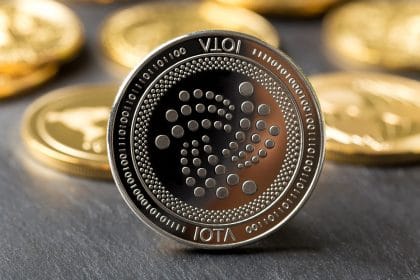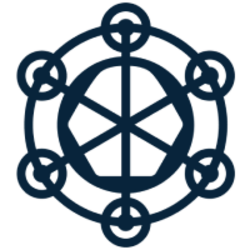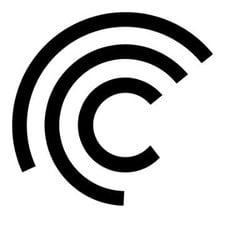
To enlighten our readers on certain underlying crypto technologies, this guide brings a vivid review of a very efficient instrument and a backbone to IoT that records the exchange of machine-to-machine transactions, Iota.
The crypto circle is very wide and technical. As such, there are some underlying technologies that aid certain activities performed in the industry. These tech instruments make transactions and crypto activities easy and simple to comprehend. Hence, it is important that crypto enthusiasts get to know these technologies and find the industry more interesting. Meanwhile, one of these amazing tools is Iota (MIOTA), a ledger specially designed for the “Internet of Things” (IoT).
Many regard Iota as the backbone of the Internet of Things. It is a scalable network and a distributed ledger innovated to act as the fortitude to microtransactions within the IoT ecosystem.
In other words, the platform is a distributed ledger that records and exchanges values and data between humans and machines that are connected with the Internet of Things. It aims to act as a backbone that is free of conditions for the Internet of Things to enable interoperability between multiple devices. This way, the network enables transactions between connected devices. These transactions are made accessible to anyone via its token dubbed MIOTA.
History of Iota
In the tale of cryptocurrencies, Iota happens to be the first network that facilitates transactions between connected devices within the Internet of Things ecosystem. In late 2015, the project was introduced to the industry by a team that comprises Sergey Ivancheglo, Dominik Schiener, Dr. Serguei Popov, and David Sønstebø, the initial team leader.
The project had originated from a Jinn project which was initially aimed at offering low-cost general-purpose processors in the IoT community.
At that time, it was still a hardware project. However, it became a scalable solution after further advancements to enable it to remediate certain issues with Bitcoin (BTC). It was then rebranded to Iota with new adjustments to its designs and goals. Hence, it designed an alternative for Bitcoin’s blockchain to achieve its objectives. Its replacement for Bitcoin is called Tangle.
The Internet of Things Economy
As the world continues to advance with more technological impacts on the economy, businesses are beginning to adopt new and technical business models, thus IoT devices are becoming more essential to the global economy as each day passes.
Firms and businesses are beginning to consider IoT devices very interesting and efficient to use. But unfortunately for non-related companies, there are no ways to purchase the data provided by these devices.
Interestingly, Iota has provided a cryptocurrency that acts as a pillar for the Internet of Things ecosystem. Iota seeks to remediate the challenges encountered by certain companies in acquiring information from IoT devices. Its cryptocurrency MIOTA offers a feeless digital asset model that can operate efficiently on the most humble of devices.
Iota Tangle
Bitcoin’s traditional blockchain mode of operations does not complement Iota’s design and goals. Therefore, Iota has provided a replacement for it. The replacement known as “Tangle” is a system that consists of nodes and sites which allow new transactions to confirm previous transactions. Thus, Iota operates and performs transactions in its own dimension.
The traditional blockchain and cryptocurrencies are mostly facing scalability and high gas fee issues which makes micro-transactions almost impossible.
This is a major challenge that the Internet of Things economy is solving. In a bid to provide solutions suitable for the IoT ecosystem, Iota has provided a scalable network that conducts speedy transactions, and also enables low fees that make micro-transactions possible.
This could only be possible through the invention of a new technical model (Directed Acyclic Graph) it has introduced to act as an alternative to the traditional blockchain. The platform named its invented blockchain-like technology, Tangle.
Tangle acts advantageously over the traditional blockchain as it gets rid of miners. Instead, it requires new transactions to process two other transactions before their approval on the network. Here, any device no matter its low capacity can perform these transactions as the proof of work needed for the transaction is very low in power.
As a result, microtransactions have no form of mining fees.
Moreso, the kind of model Tangle adopts allows it to accommodate an unlimited number of devices as it processes each transaction individually. This way there is no room for outstanding transactions as potential transactions would first need to process two others before their completion.
Other Tech Features of Iota
Apart from the “Directed Acrylic Graph” kind of technology that Iota adopts to facilitate a mining-free kind of operation, it also uses some Hash-based signatures dubbed Quantum Proof.
Quantum proof allows the network to get rid of complex verification and signing processes. Thus, it has made the Tangle network very simple to use. This way Iota can swiftly meet the needs of the IoT devices and boost the functionality of the network in the IoT ecosystem.
How Is IOTA Different from Bitcoin?
IOTA (MIOTA) differs from Bitcoin in many ways since it functions in a way that opposes the performance of Bitcoin.
Bitcoin is basically a decentralized digital asset that utilizes the traditional blockchain for its transactions. Meanwhile, Iota’s design has a blockchain opposing system that aims to move cryptocurrency beyond blockchain. Most notably, Iota uses the Tangle mining system while Bitcoin utilizes the traditional blockchain model of mining.
In addition, the invention of Iota came up late after that of Bitcoin. Bitcoin was the first cryptocurrency that launched in 2009 and has become the king of all cryptocurrencies while Iota appeared in late 2015 and is still striving for more recognition.
In other words, Bitcoin’s adoption has grown so massively and globally with a market cap of over $250 billion as of early 2021 than that of Iota which only has a market cap of over 5 billion at the same time.
Iota (MIOTA) Token
The Iota token, or MIOTA, is the cryptocurrency that is usable by the Internet of Things ecosystem to efficiently carry out transactions. It gives users the opportunity to monetize the user data generated from the Internet of Things devices with no complex processes.
The token is available for purchase at major crypto exchanges like Binance, eToro, Bitfinex, Gemini, Huobi, and some others.
Impressively, 2,779,530,283 MIOTA were in circulation as of 2021’s first quarter and all supplied coins were reportedly in circulation.
Iota’s Pros and Cons
Iota comes with many benefits to users. At the same time, there are some inevitable challenges that the users of the network are facing.
Some of the advantages that come with the use of Iota are as follows:
- Low gas fees.
- No complexities in signing and verification processes.
- The solution to the issue of scalability that affects other cryptocurrencies.
- Easy adoption by the IoT community.
However, a few notable disadvantages of Iota are:
- Same price governance with traditional cryptocurrencies. Thus, the price fluctuates massively.
- Iota is facing the technical flaws of a developing and unproven system.
- It is prone to manipulative and fraudulent attacks.
Conclusion
Iota (MIOTA) is a unique cryptocurrency and it has appeared to enhance the economic relationships between machines. It has introduced an amazing system that bridges the human and machine economies and has been deemed pleasant by many crypto experts.
Iota is obviously a run-to for enthusiasts who intend to perform micro-transactions and cannot afford high transaction fees. It is an alternative to Bitcoin and other cryptocurrencies even though its price fluctuates in the same way.










































































Be the first to comment